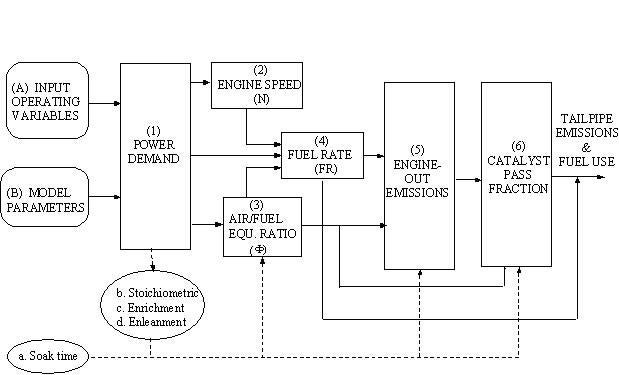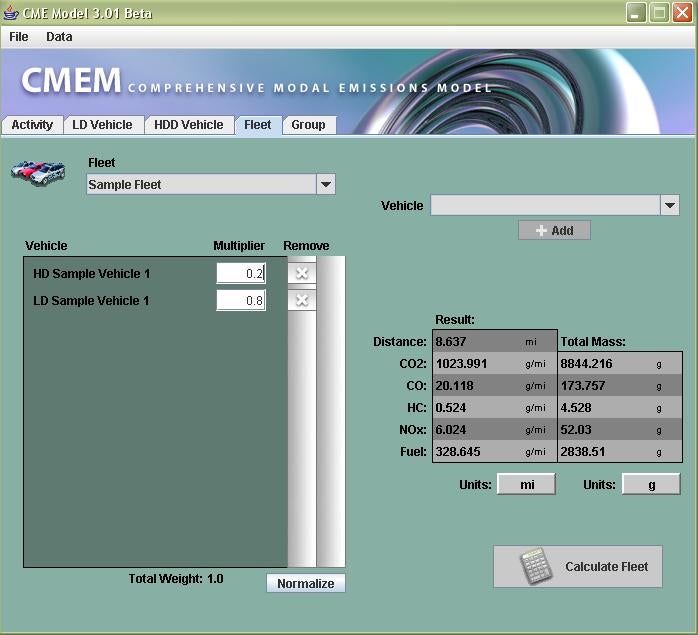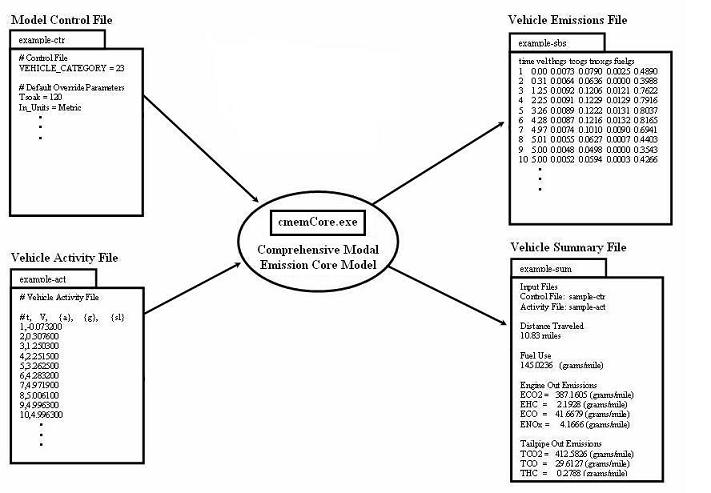Developed under NCHRP Project 25-11
In August 1995, the College of Engineering-Center for Environmental Research and Technology (CECERT) at the University of California-Riverside along with researchers from the University of Michigan and Lawrence Berkeley National Laboratory, began a four-year research project to develop a Comprehensive Modal Emissions Model (CMEM), sponsored by the National Cooperative Highway Research Program (NCHRP, Project 25-11). The overall objective of the research project was to develop and verify a modal emissions model that accurately reflects Light-Duty Vehicle (LDV, i.e., cars and small trucks) emissions produced as a function of the vehicle's operating mode. The model is comprehensive in the sense that it is able to predict emissions for a wide variety of LDVs in various states of condition (e.g., properly functioning, deteriorated, malfunctioning). The model has since been updated to include Heavy Duty Diesel Vehicles (HDDV) and is capable of predicting second-by-second tailpipe emissions and fuel consumption for a wide range of vehicle/technology categories.
CMEM Model Architecture
CMEM is a physical, power-demand model based on a parameterized analytical representation of emissions production. In this model, the emission process is broken down into different components or modules that correspond to physical phenomena associated with vehicle operation and emissions production. Each component is then modeled as an analytical representation consisting of various parameters that are characteristic of the process. These parameters vary based on several factors, such as vehicle/technology type, fuel delivery system, emission control technology, vehicle age, etc. Because these parameters typically correspond to physical values, many of the parameters are stated as specifications by the vehicle manufacturers, and are readily available (e.g., vehicle mass, engine size, aerodynamic drag coefficient, etc.). Other key parameters relating to vehicle operation and emissions production must be determined from data obtained from a testing program.The image on the right is a basic layout of CMEM Architecture.
CMEM Model Formats
The CMEM emission model is available in the following formats:
Java Based GUI: The CMEM Graphical User Interface (GUI) was developed as a user friendly interface for the CMEM model. Java runs on multiple platforms and was designed with the intent of making code more portable between various operating systems. To run the CMEM Java GUI, the operating system must be equipped with the Java Runtime Environment (JRE) which is readily available. The CMEM GUI runs both the LDV and HDDV modules of the CMEM model.
Paramics Plugin: The Paramics CMEM plugin provides an interface between CMEM and Paramics, a powerful application developed by Quadstone Limited for microscopic traffic simulation. One of the key attributes of Paramics is its open architectures enabling the integration of plugin modules for carrying out specific functions. The CMEM Paramics plugin calculates emission data for every vehicle in a Paramics simulation at every second and summarizes the data in output log files as well as displaying summary information during runtime. Emission information is summarized by link and a timestep defined by the user.
Command Line Model: The command line version of the CMEM model is an executable that can be run under DOS in the PC environment or under Linux. The command line executable uses text files as inputs and can easily be called by another program which gives the user some flexibility.
Download
For more information regarding CMEM and its formats, please refer to the following User's Guide.


